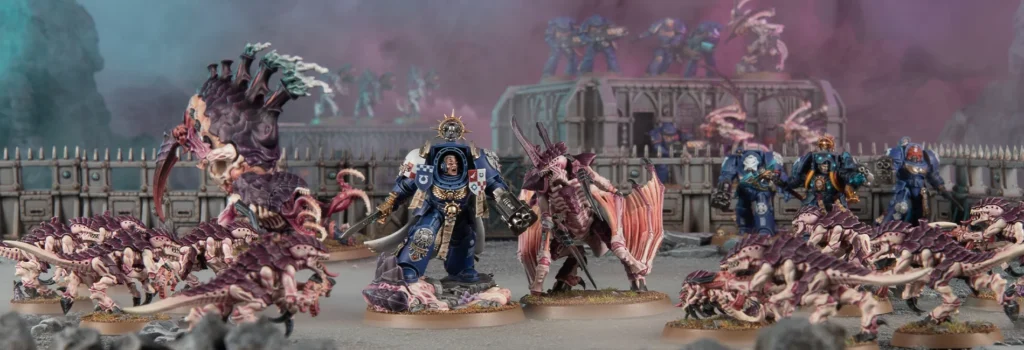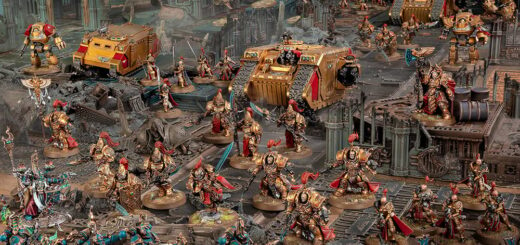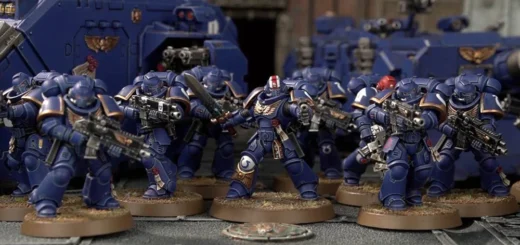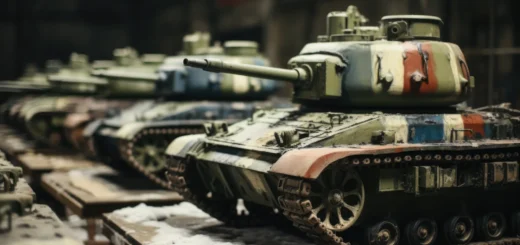Warhammer 40k: What Is The Most Popular Table Top War Game?

Warhammer 40,000 (often abbreviated as Warhammer 40K or simply 40K) is a tabletop miniature wargame created by Games Workshop. It is set in a dystopian science fantasy universe in the far future, around the year 40,000 AD (hence the name). The game was first introduced in 1987 and has since become one of the most popular and iconic tabletop wargames in the world.
What is a Tabletop War Game?
A tabletop wargame is a strategy game where players use miniature figurines or models representing various military units, characters, or creatures to simulate battles or conflicts on a tabletop. These games typically utilize rule sets to govern how the game is played, often involving tactics, strategy, and luck.
Players take on the roles of commanders or generals, making decisions about how to move their units, engage in combat, and achieve specific objectives within the context of the game’s rules and scenario. These games can encompass various settings and themes, including historical periods, fantasy worlds, science fiction universes, and more.
Tabletop wargames may involve complex rules for movement, combat, and other mechanics, as well as considerations for terrain, cover, and various abilities or powers possessed by the different units. The outcome of battles is often determined by dice rolls or other random elements, adding an element of chance to the strategic decisions made by the players.
Examples of popular tabletop wargames include Warhammer: Age of Sigmar, Bolt Action, Conquest: The Last Argument of Kings, and of course, Warhammer 40k. These games often attract dedicated communities of players who enjoy both the strategic and creative aspects of assembling, painting, and customizing their miniature armies and then using them in battles against opponents.
The Warhammer 40,000 Universe
In the Warhammer 40K universe, humanity is part of a vast and sprawling galactic empire known as the Imperium of Man. The Imperium is beset by numerous existential threats, including hostile alien species, chaos gods and demons, and internal strife. The setting combines elements of dark fantasy, science fiction, and gothic horror, creating a grim and often brutal atmosphere. The game features a rich lore that encompasses stories, novels, video games, and other media, further expanding the universe and its characters.
How is the Game Played?
Players of Warhammer 40K assemble and paint miniatures representing various factions within the universe, such as space marines, alien races, and chaos forces. These miniatures are then used in tabletop battles that involve strategy, tactics, and dice rolls to simulate combat and conflict. Each of the factions is grouped into larger alliances based on race or who they worship.
Imperium
The Imperium represents the different factions of humans that are spread throughout the galaxy. These include warriors such as the Space Marines, the Adeptus Mechanicus, or the Imperial Guard.
Chaos
The forces of Chaos can range from playing armies completely composed of demonic creatures who are here to bring death and destruction to the universe or they can be human factions that have fallen to darkness and given in to the temptations of the 4 Chaos Gods.
Xenos
The Xenos forces make up the alien races of the 40k universe. You can command the never-ending hordes of giant biomass-consuming insects known as the Tyranids or the soulless robotic forces of the Necrons who have awakened after many millennia to strike all life from existence in the universe.
Building Your Models
Once you have chosen your faction, the next step is to assemble and paint your models. Each of the units that you choose to play in your army will come in a model, or kit, that you can purchase from any hobby or gaming store that is near you. Since Warhammer 40k is the most played tabletop war game in the world, just about any store dedicated to tabletop gaming will have some kind of Warhammer selection for you to choose from.
Each kit comes with one or more models that you will then assemble using some very simple tools ( snips, plastic glue, etc ) and a set of instructions on how to assemble the models. Most of these are fairly easy to assemble for anyone in their teens or older, but for anyone younger, you would need the help of an adult to finish getting them together. Once assembled, next comes the painting.
Painting Your Models
Here is where you can really get creative with your army. You can choose to paint your models in a lore-accurate manner, such as the iconic blue and white of the Ultramarines, or you can decide to create your own sub-faction of an army and paint those models any way that you would like. This part of the hobby has its own community and even has events and awards that are strictly focused on modeling and painting. While this aspect of the hobby gives you the opportunity to get creative and build the force in any way that you would like, painting is not a requirement for playing unless you are playing competitively as most tournaments require armies to be painted with at least 3 colors and have some kind of basing completed to gain the extra 10 points for a paint score in a tournament. But for casual play among your friends or local gaming club, this is not required. We will cover more about painting and modeling in future articles as this is a big part of the hobby.
Tools You Need to Play
Once you have your army built, it comes time to play the game. There are a few tools that you will need before you get started. You’ll need some 6-sided dice ( any standard 6-sided dice will work for this and it is usually good to have at least 10 of them ). You will need some kind of measurement tool. This can be a tape measure from your local hardware store or you can find measuring instruments on sites like eBay or Etsy that are specifically designed for war games like Warhammer 40k. Next, you will need the Core Rules and the Datasheets for your selected army. With the release of Warhammer 40k 10th Edition, all of these items are available online for free.
The Core Rules will help you to understand the different phases of the game like your Command Phase, the Movement Phase, or the Shooting Phase. These rules have definitions of what you can and can’t do in each of these phases. There are a lot of rules to learn and it takes a little while to understand how to play the game, but with the help of your friends or local community, you will have it down in no time. It just takes practice and playing the game often to master the core rules of the game.
Datasheets are individual sheets that represent all of what a particular unit can do in your army. With the release of the 10th edition of 40k this last June, Games Workshop has put all of the datasheets for all of the factions online for free and they can be downloaded from the Warhammer Community website. These datasheets are the initial offerings for the new edition and will get tweaked and changed over time as they try to balance the game, but these indexes will get you started.
The last item you will need to play is some terrain features. Terrain plays a big part in Warhammer 40k as it sets the scene of your three-dimensional battlefield and the different types of terrain affect what you can do in the game. For example, if you are behind the ruins of a building your opponent cannot shoot you through the building they have to make their way around to get a line of sight on your units in their movement phase. Or if you are standing behind some trees then your opponent will suffer a penalty when trying to shoot at you. The terrain on the board plays a big part in the strategy of how you are going to play your game, but you don’t need to spend money to buy terrain models to use in the game. Purchasing terrain will obviously add to the immersion of playing in a war-torn cityscape, but you can just as easily use some books or cardboard boxes to represent buildings and some old soda cans to use as canisters or statues that you can hide behind. It is really up to you how you set up the board to play.
Once you have all these tools all you need is a friend with their own army and a place to set up and play.
Where Can I Play Warhammer 40K?
This is the big question, where can you play? Well, the answer is, just about anywhere you fit a 60″ x 44″ table. You can do this in your living room or kitchen with a friend, or you can travel to a local game shop ( often referred to in the community as an LGS ) to play. Most game shops have tables set up to play and many will have Terrain pieces and objective markers for you to use while you are there. Most of the shops here in Ohio also have a robust community that can help you learn the game and many offer monthly tournaments that you can play in for prizes that are usually store credit to help you continue to build out your army.
Some of the best places we have found to play locally are Battlegrounds to Boardgames in Canton, OH, The Shop in Vermillion, OH, and Recess Games in North Olmstead. Each of these has a great community for playing and learning Warhammer and some of the shops even have demo armies that you can come in and borrow to learn the game from someone in the community.
At the end of the day where you play and how you play is totally up to you. The Warhammer 40k community is a great place to meet new people and make new friends all while fighting epic battles set in a sci-fi setting. It’s a great hobby where you can be as creative as you want to and get together with friends to tell stories that shape the destiny of mankind in the far-flung future of a grim dark universe.




